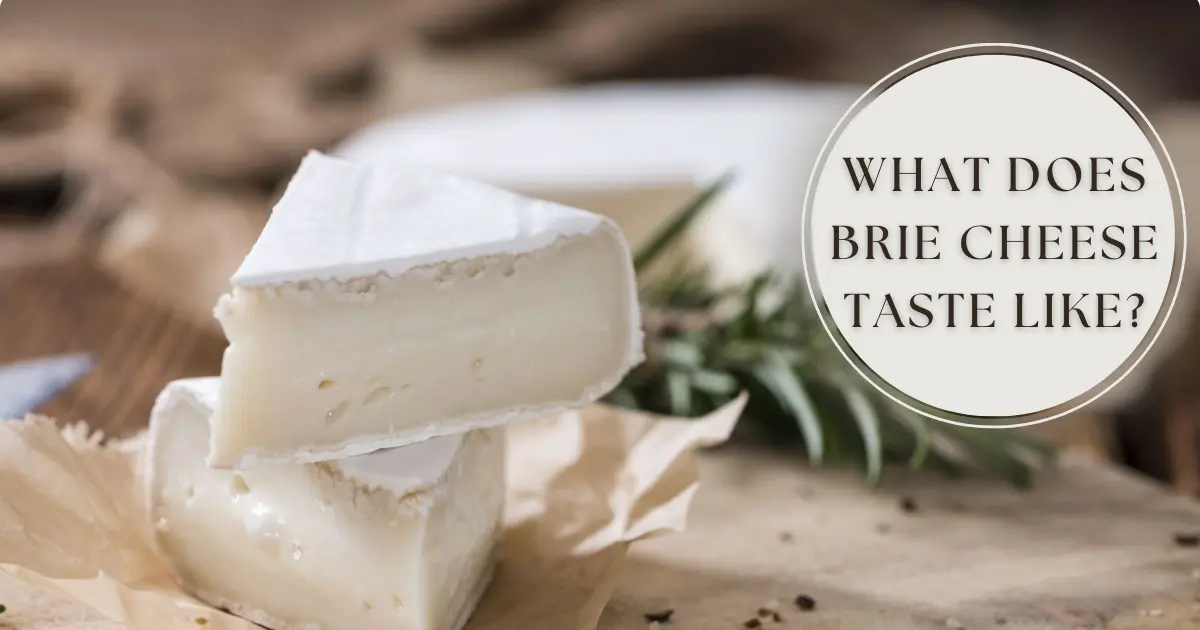Brie cheese, a beloved soft cheese originating from France, has captured the hearts of food enthusiasts worldwide. Its creamy texture and subtle flavors make it a versatile ingredient in both gourmet and everyday cuisine. This article explores what Brie cheese tastes like, how to enjoy it, and what makes it a standout in the world of cheese.
What Does Brie Cheese Taste Like?
Brie cheese is characterized by its mild, buttery, and creamy flavor. The interior has a rich, milky taste with a hint of nuttiness, while the edible white rind offers a slightly earthy and mushroom-like profile. Brie’s balanced flavor appeals to both seasoned cheese lovers and newcomers alike.
What Does Brie Cheese Taste Similar To?
If you’re wondering what Brie cheese tastes similar to, here’s a comparison table:
| Cheese Name | Flavor Profile | Texture | Similarity to Brie |
|---|---|---|---|
| Camembert | Earthy, stronger flavor | Soft and creamy | Very similar |
| Triple Cream Brie | Buttery, richer | Ultra creamy | Closest match |
| Goat Cheese | Tangy, slightly earthy | Soft, crumbly | Slightly similar |
| Cream Cheese | Mild, tangy | Smooth and spreadable | Mild similarity |
What Does French Brie Cheese Taste Like?
French Brie, often unpasteurized, boasts a deeper and more nuanced flavor compared to its international counterparts. The traditional French version has a more pronounced earthy and mushroom-like taste, accompanied by a silkier texture.
Key Differences Between French Brie and Other Varieties
| Feature | French Brie | American Brie |
|---|---|---|
| Pasteurization | Often unpasteurized | Typically pasteurized |
| Flavor Intensity | Rich, complex | Mild, less earthy |
| Texture | Creamier, softer | Slightly firmer |
Understanding Brie Cheese Rind
The rind of Brie cheese is edible and contributes to its unique taste. It’s made from a mold called Penicillium candidum, which gives the rind its signature white, bloomy appearance.
What Does Brie Cheese Rind Taste Like?
The rind has an earthy, tangy, and slightly bitter flavor. It balances the creaminess of the cheese and adds depth to the overall taste experience.
Does Brie Cheese Taste Like Ammonia?
Occasionally, Brie may develop an ammonia-like smell or taste, especially if it’s overripe or improperly stored. While a mild ammonia scent is natural due to aging, a strong ammonia taste suggests the cheese has gone bad.
The Correct Way to Eat Brie Cheese
Brie is best enjoyed at room temperature to bring out its full flavor and creamy texture. Here’s a step-by-step guide:
- Unwrap the Cheese: Remove from its packaging and let it sit for 30-60 minutes.
- Slice with Care: Use a sharp knife to cut wedges, including the rind.
- Pair Thoughtfully: Complement with fruits, nuts, and crackers.
- Enjoy in Layers: Spread on bread or combine with toppings for added flavor.
What Does Brie Cheese Compare To?
Brie is often compared to other soft cheeses like Camembert, though it has a milder taste. Triple cream cheeses, with their extra cream content, offer an even richer and smoother texture, making them a natural extension for Brie lovers.
Brie Pairings and Serving Ideas
Brie pairs exceptionally well with both savory and sweet accompaniments.
Sweet Pairings
| Fruits | Condiments |
|---|---|
| Apples | Honey |
| Grapes | Fig Jam |
| Pears | Raspberry Jam |
Savory Pairings
| Crackers/Bread | Meats |
|---|---|
| Baguette | Prosciutto |
| Water Crackers | Salami |
How to Identify Bad Brie Cheese?
Bad cheese is easy to spot with these signs:
- Strong Ammonia Smell: Indicates it’s overripe.
- Discolored Rind: Yellow or gray spots suggest spoilage.
- Bitter Taste: A sour or off-putting taste means it’s no longer safe to eat.
Conclusion
Brie cheese is a versatile and universally loved cheese, renowned for its mild yet luxurious flavor. Whether comparing it to other cheeses, exploring the unique taste of its rind, or pairing it with complementary foods, Brie offers a sensory experience like no other. From its creamy interior to its slightly tangy rind, every bite delivers a perfect balance of textures and flavors.
Understanding how to store, serve, and enjoy Brie enhances its appeal, making it a staple in any cheese lover’s repertoire. Explore Brie alongside your favorite wines, fruits, and breads to discover endless possibilities.
FAQs
What Does Brie Cheese Taste Like?
Brie tastes creamy, buttery, with a hint of earthiness from its edible rind.
Does Brie Cheese Taste Like Ammonia?
A mild ammonia scent is normal but a strong taste indicates spoilage.
What Does Brie Cheese Compare To?
Brie is similar to Camembert and triple cream cheeses, offering a soft and creamy texture.
What Pairs Well with Brie Cheese?
Pair Brie with fruits like apples, grapes, and condiments like honey or fig jam.
Can You Eat the Rind of Brie Cheese?
Yes, the rind is edible and adds an earthy, tangy flavor to the cheese.

